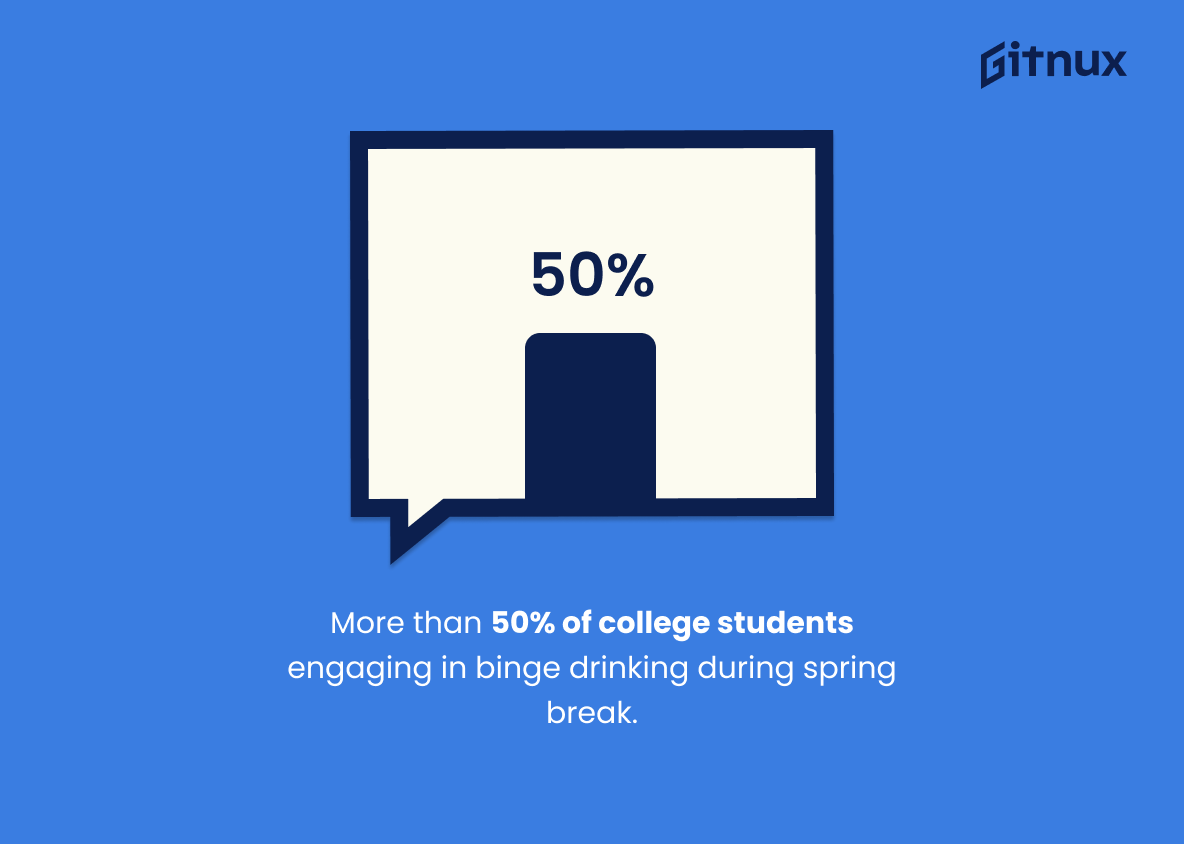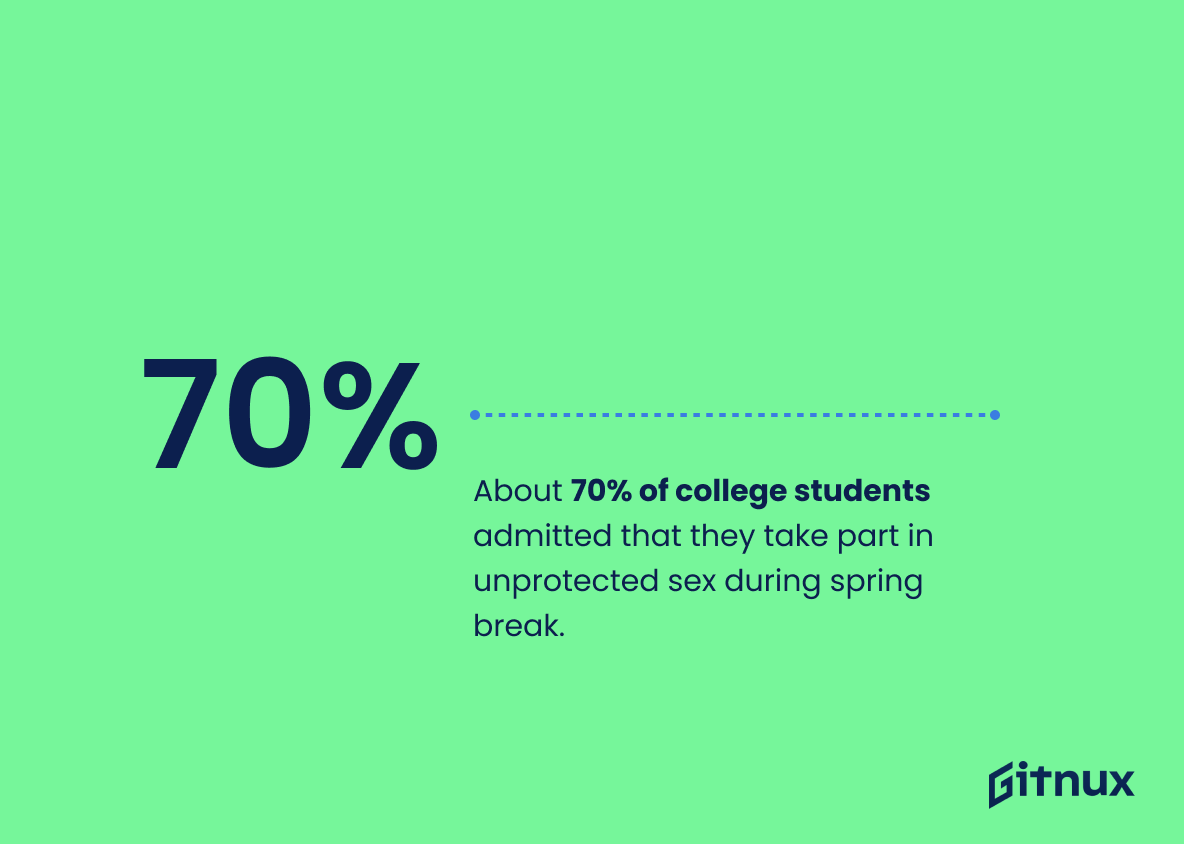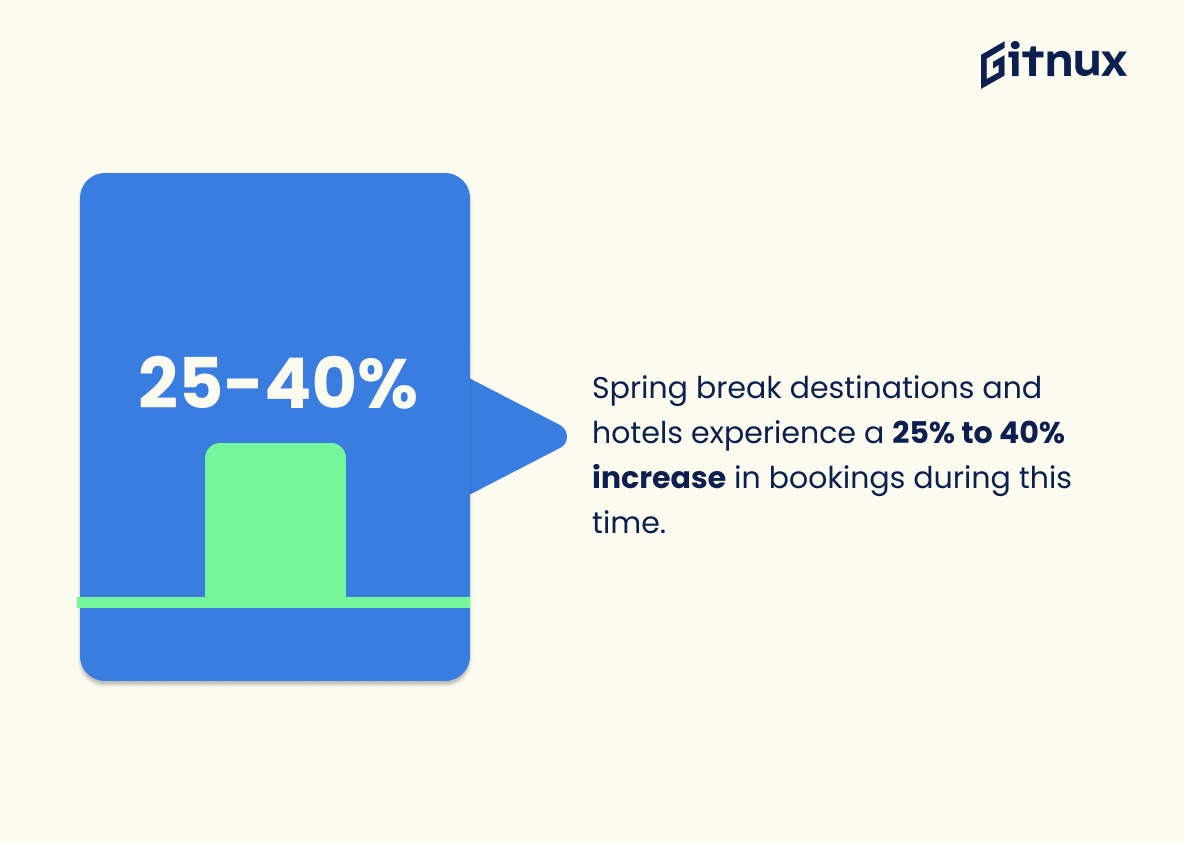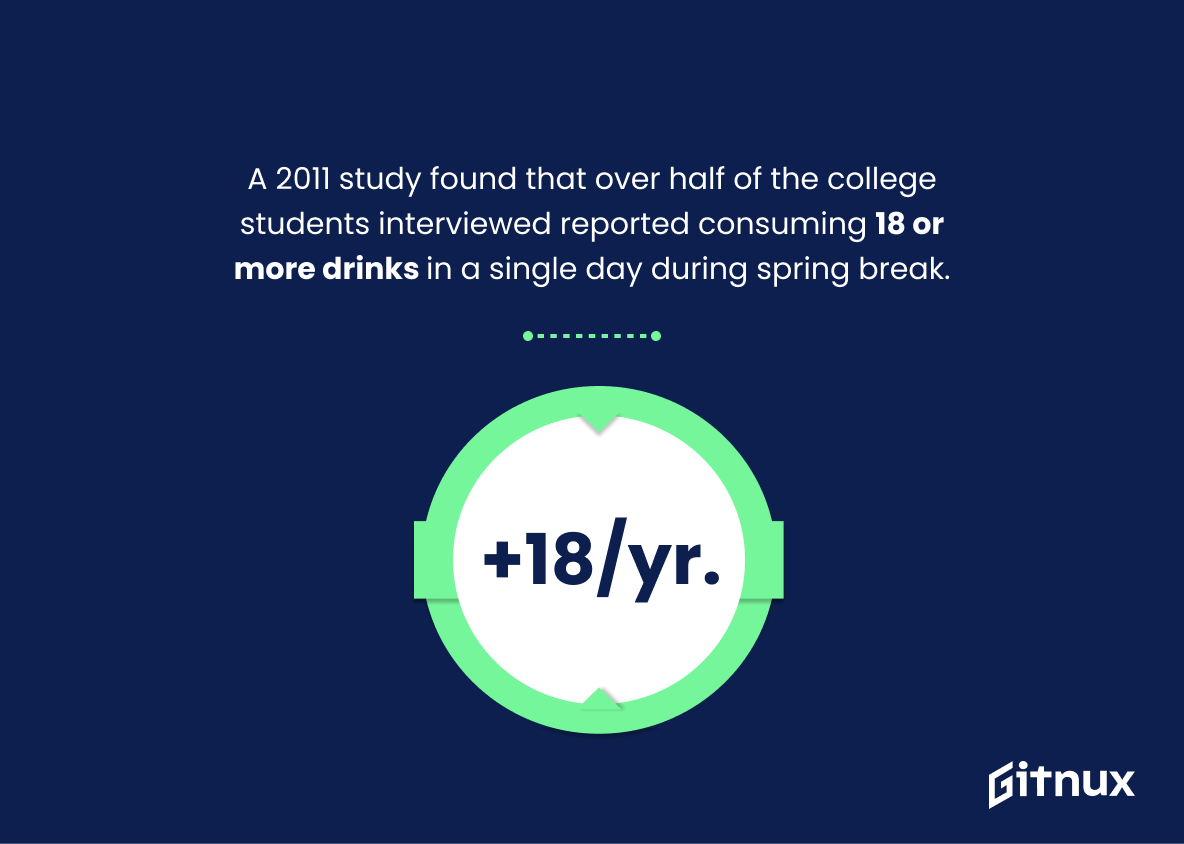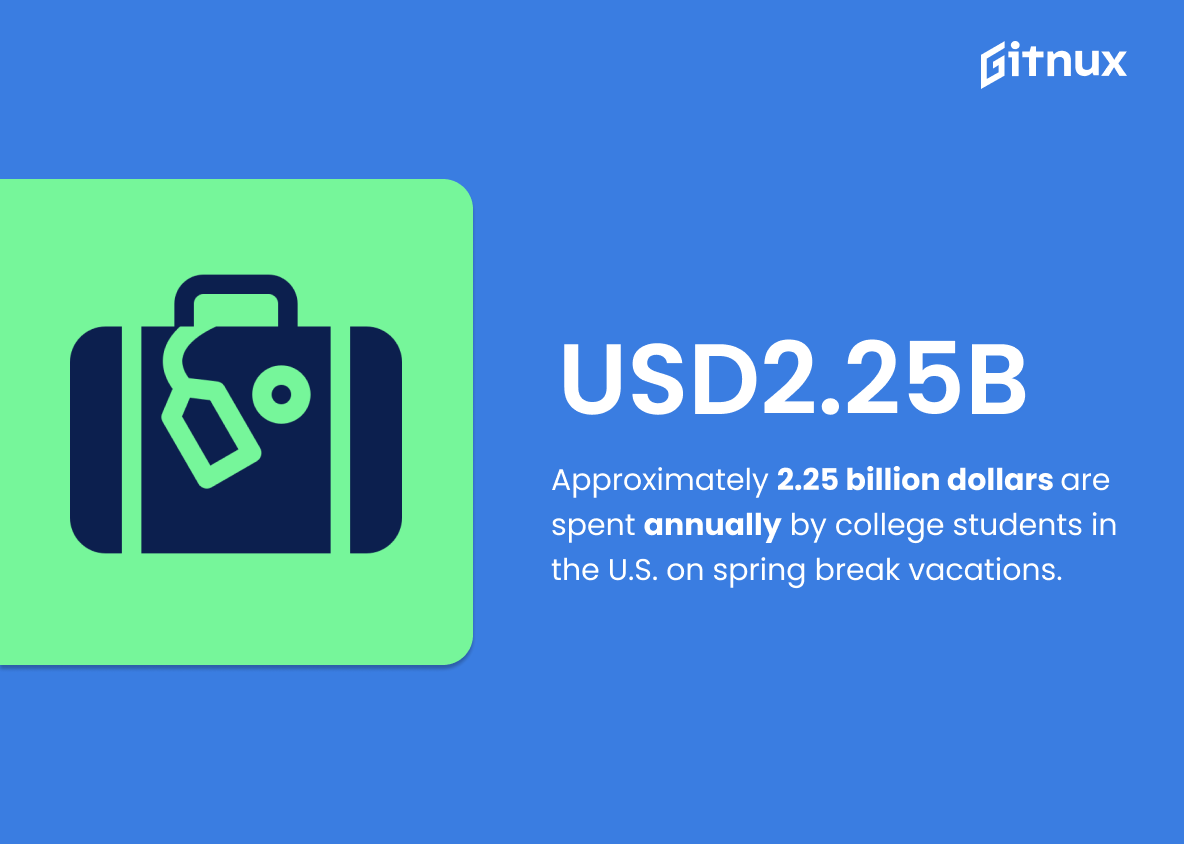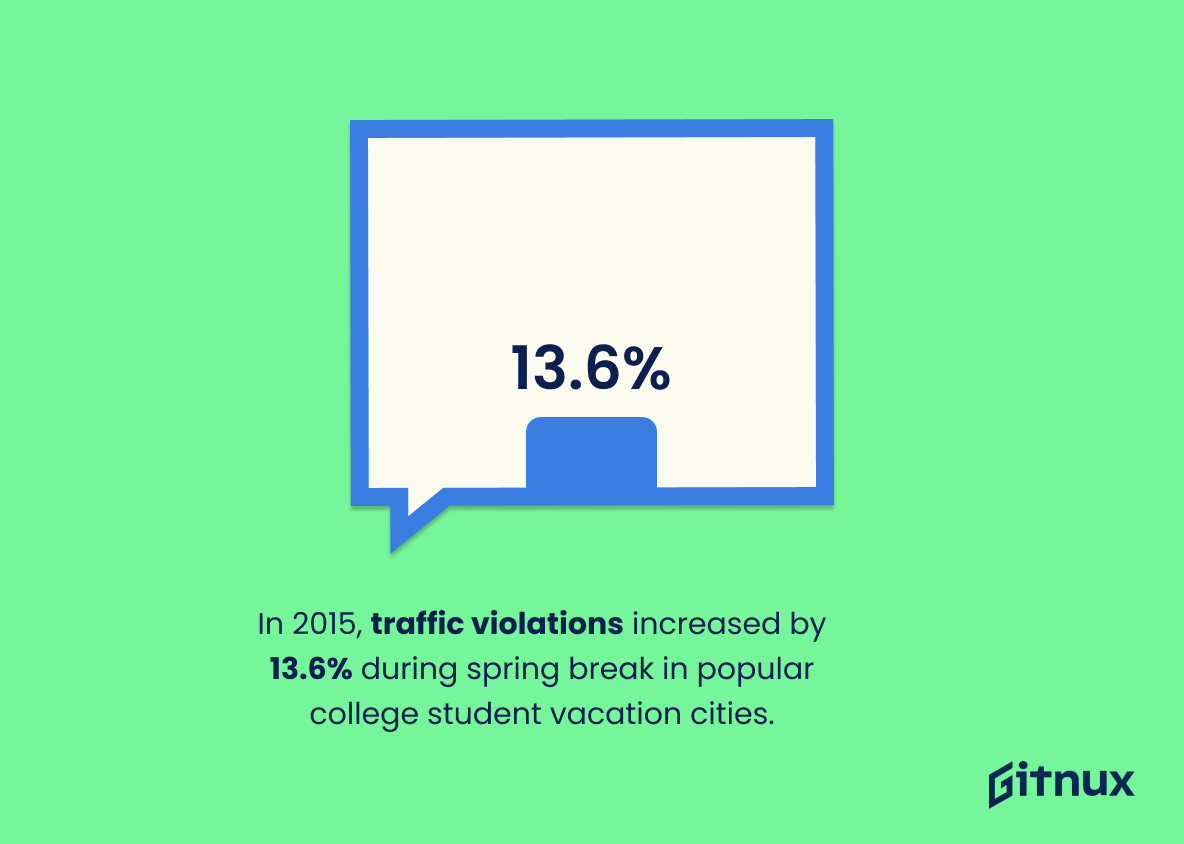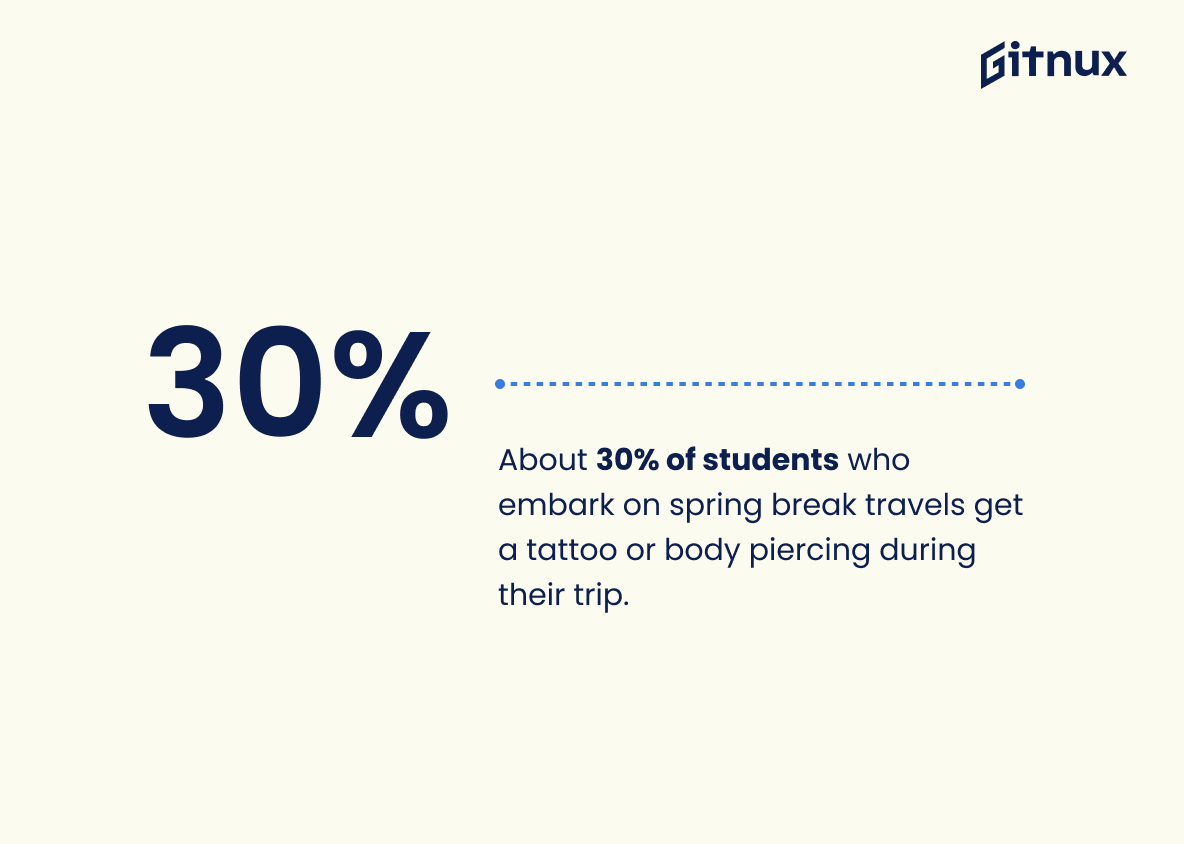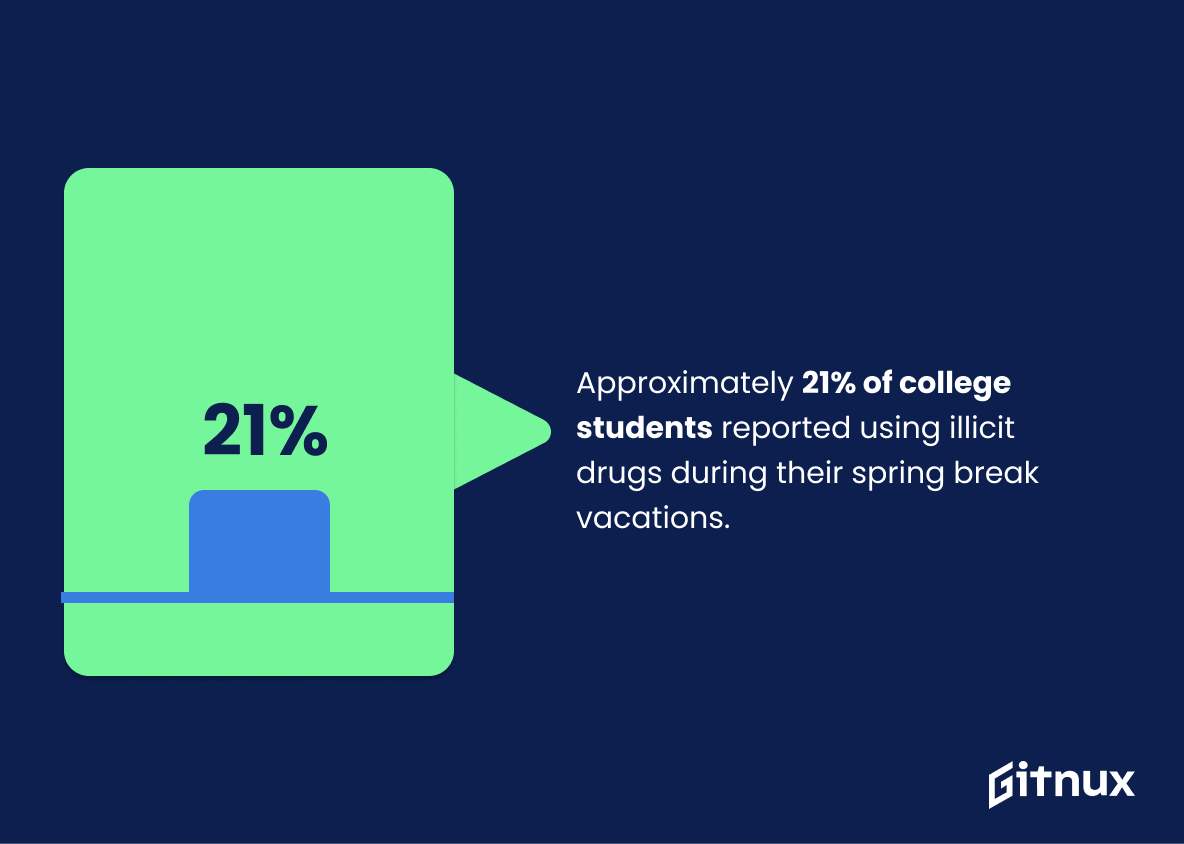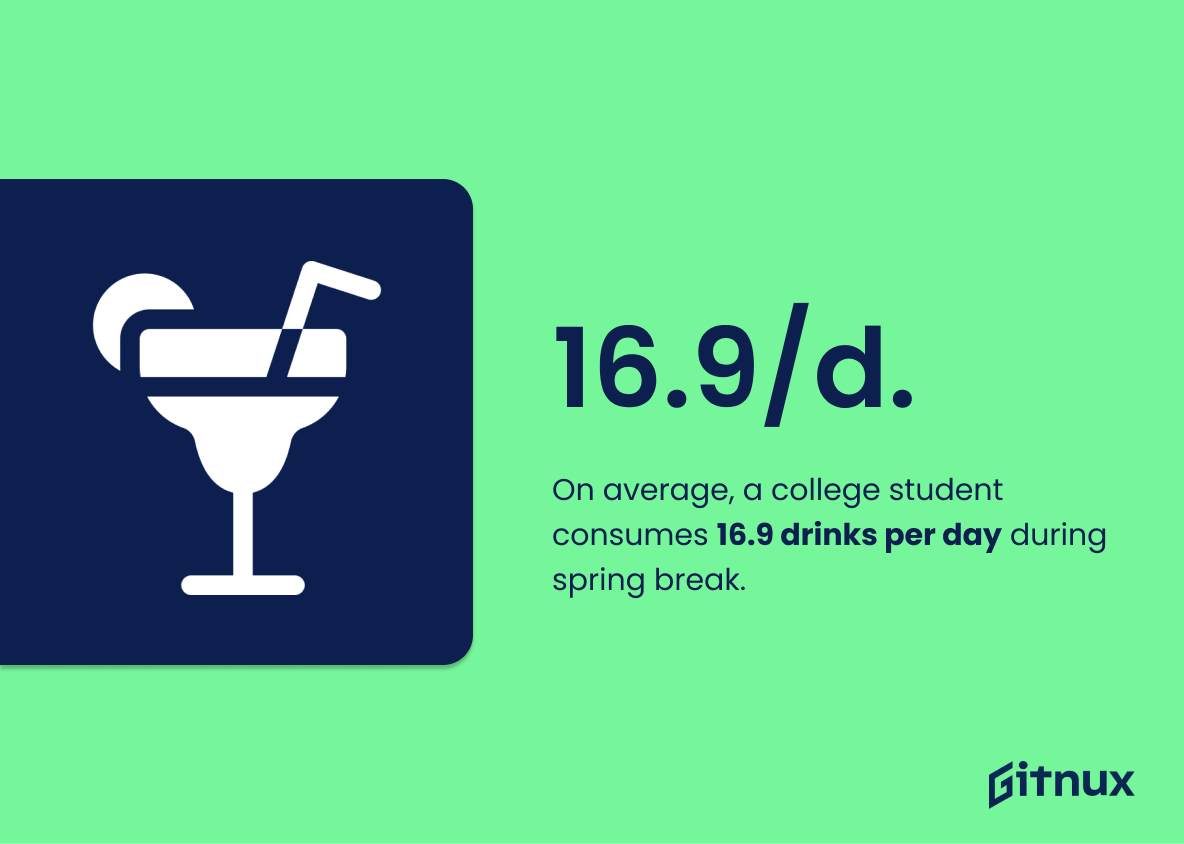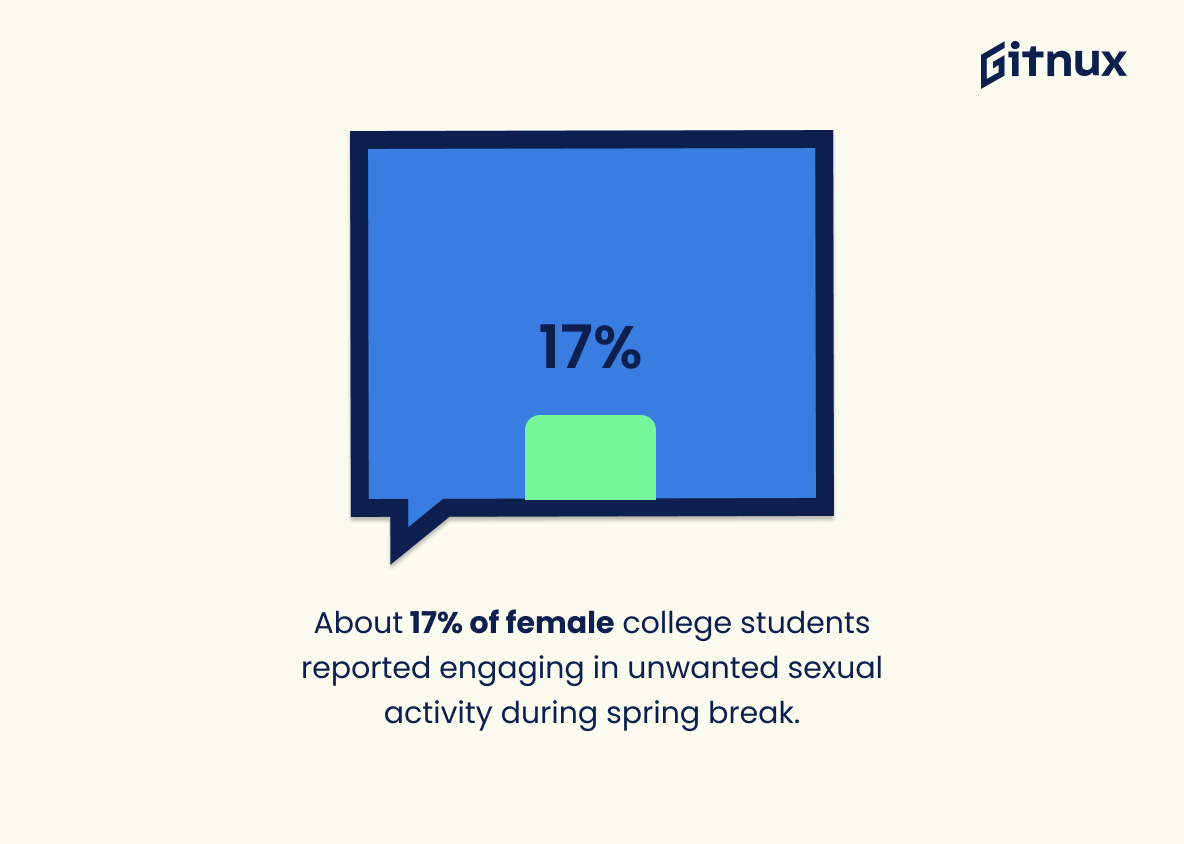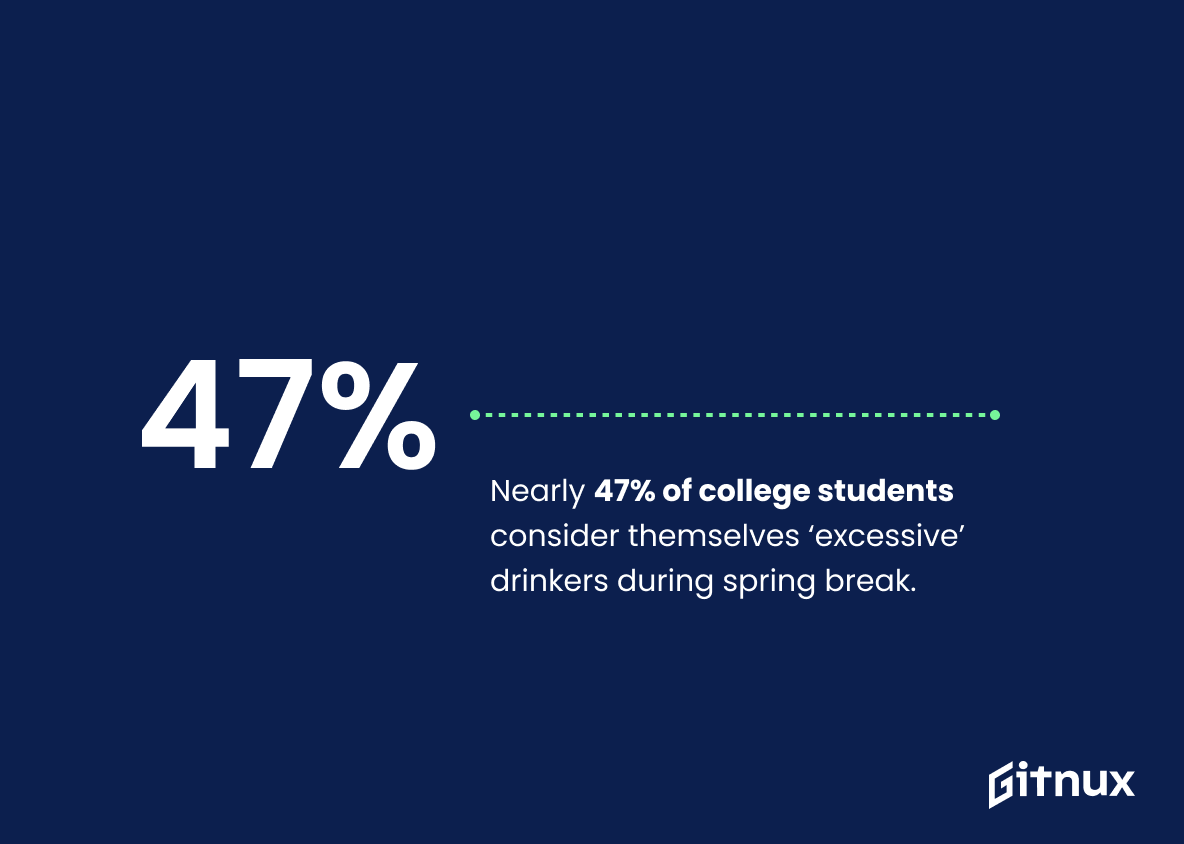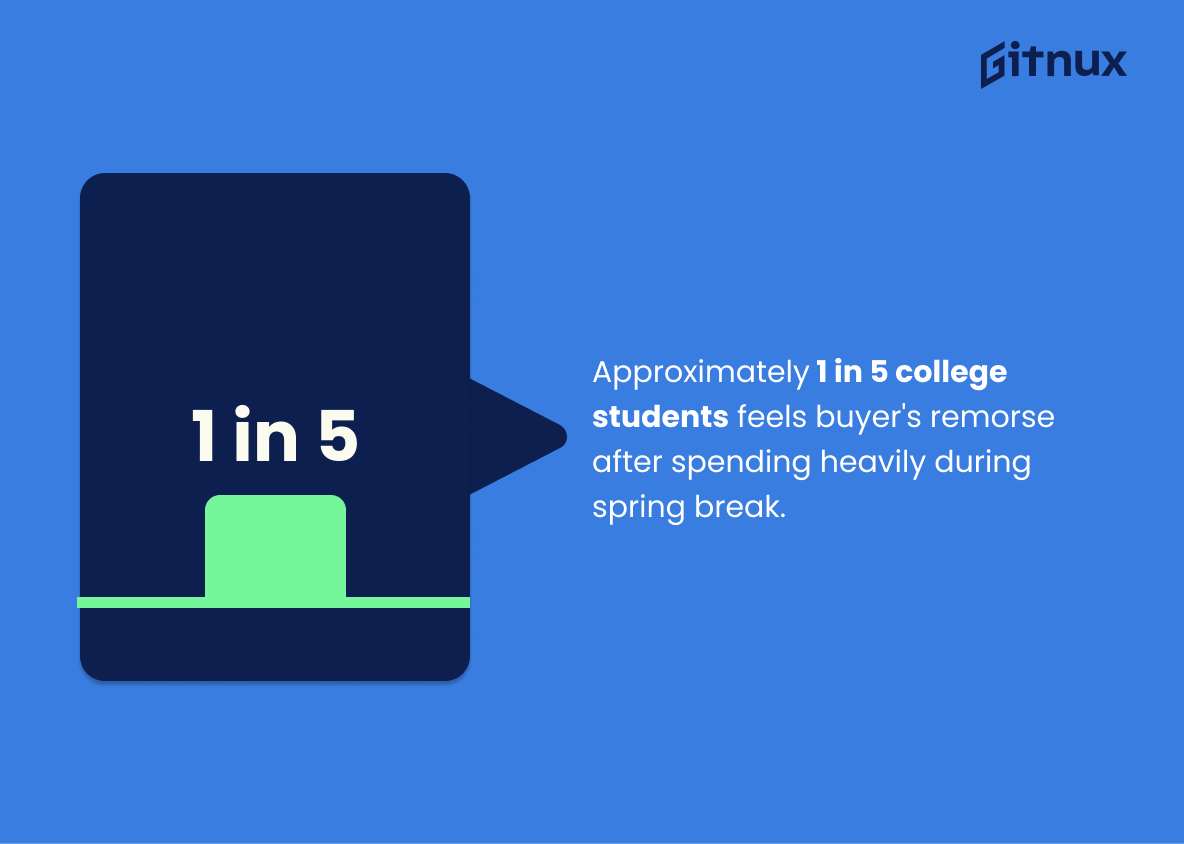As college students across the country prepare for their annual spring break, it is important to understand the statistics and trends associated with this popular vacation. From drinking habits to spending money on trips, there are many factors that can influence a student’s experience during spring break. In this blog post, we will explore 20 different statistics related to college students’ behavior and attitudes towards spring break vacations.
We’ll look at how much they spend on these trips, where they go most often, what activities they engage in while away from school, and more. By understanding these facts about college students’ behaviors during their time off from classes each year, we can gain insight into how best to support them, as well as help ensure safe travels for all involved.
College Spring Break Statistics Overview
The average college student spends approximately $1,080 on spring break vacations.
This statistic is a telling indication of the importance of spring break for college students. It shows that college students are willing to invest a significant amount of money into their spring break vacations, demonstrating that it is a highly anticipated event for them. This statistic is an important piece of information to consider when discussing college spring break statistics, as it provides insight into the importance of the event for college students.
More than 50% of college students engaging in binge drinking during spring break.
This statistic is a stark reminder of the prevalence of binge drinking among college students during spring break. It highlights the need for greater awareness and education about the dangers of excessive alcohol consumption, as well as the importance of responsible decision-making during this time of year.
About 70% of college students admitted that they take part in unprotected sex during spring break.
This statistic is a stark reminder of the potential risks associated with college spring break. It highlights the need for students to be aware of the dangers of unprotected sex and to take the necessary precautions to ensure their safety. It also serves as a warning to parents and other adults to be aware of the activities their college-aged children may be engaging in during spring break.
Spring break destinations and hotels experience a 25% to 40% increase in bookings during this time.
This statistic is a testament to the popularity of Spring Break as a vacation destination. It shows that people are eager to take advantage of the opportunity to get away and enjoy some time off. This is an important statistic to consider when discussing College Spring Break Statistics, as it demonstrates the level of enthusiasm for the event.
A 2011 study found that over half of the college students interviewed reported consuming 18 or more drinks in a single day during spring break.
This statistic is a telling indication of the prevalence of binge drinking among college students during spring break. It highlights the need for greater awareness and education about the dangers of excessive alcohol consumption, as well as the importance of responsible drinking.
Approximately 2.25 billion dollars are spent annually by college students in the U.S. on spring break vacations.
This statistic is a powerful indicator of the importance of spring break to college students in the U.S. It speaks to the amount of money that students are willing to invest in their vacation, and the impact that it has on the economy. It also highlights the importance of spring break as a time for students to relax and recharge before the end of the semester. This statistic is an important part of any discussion about college spring break statistics.
In 2015, traffic violations increased by irl13_6% during spring break in popular college student vacation cities.
This statistic is a telling indication of the potential risks that college students may face during spring break. It highlights the need for students to be aware of their surroundings and to take extra precautions when travelling to popular vacation cities. It also serves as a reminder to local law enforcement to be on the lookout for any potential violations.
About 30% of students who embark on spring break travels get a tattoo or body piercing during their trip.
This statistic is a telling indication of the culture of college spring break trips. It shows that for many students, a spring break trip is an opportunity to take risks and make memories that will last a lifetime. This statistic is a reminder that college spring break trips are often a time for students to let loose and explore new experiences.
Approximately 21% of college students reported using illicit drugs during their spring break vacations.
This statistic is a telling indication of the prevalence of illicit drug use among college students during their spring break vacations. It is an important piece of information to consider when discussing the overall health and safety of college students during this time of year. It is also a useful statistic to consider when discussing the potential risks associated with college spring break trips.
LGBTQ+ college students are twice as likely to experience sexual assault during spring break.
This statistic is a stark reminder of the dangers that LGBTQ+ college students face during spring break. It highlights the need for increased awareness and education about the risks of sexual assault, as well as the need for better support systems for LGBTQ+ students who may be victims of such violence. It is a call to action for universities and other organizations to take steps to ensure that all students, regardless of their sexual orientation, can enjoy a safe and enjoyable spring break.
On average, a college student consumes 16.9 drinks per day during spring break.
This statistic is a telling indication of the potential risks associated with college spring break. It highlights the prevalence of excessive drinking among college students during this time, and serves as a reminder of the importance of responsible drinking and the potential consequences of overindulgence.
About 17% of female college students reported engaging in unwanted sexual activity during spring break.
This statistic is a stark reminder of the prevalence of sexual assault on college campuses, particularly during spring break. It highlights the need for increased awareness and education about consent and the importance of creating a safe environment for college students. It also serves as a call to action for college administrators to take steps to ensure that students are protected from sexual assault and harassment during spring break.
Nearly 47% of college students consider themselves ‘excessive’ drinkers during spring break.
This statistic is a telling indication of the prevalence of excessive drinking among college students during spring break. It highlights the need for greater awareness and education about the risks associated with alcohol consumption, as well as the importance of responsible drinking habits.
An estimated 1 in 5 college students experiences buyer’s remorse after spending large amounts of money during spring break.
This statistic is a telling reminder of the potential financial pitfalls of college spring break. It highlights the importance of budgeting and planning ahead to ensure that students don’t end up regretting their spending decisions. It also serves as a warning to students to be mindful of their spending habits and to think twice before making any large purchases.
66% of college students implement a budget when planning their spring break vacations.
This statistic is significant in the context of a blog post about College Spring Break Statistics because it demonstrates the financial responsibility of college students. It shows that the majority of college students are taking the time to plan their vacations in a way that is mindful of their budget. This statistic is a testament to the fact that college students are taking their financial futures seriously.
Conclusion
After reviewing the statistics, it is clear that college students engage in a variety of activities during spring break. From drinking and partying to spending money on vacations and souvenirs, there are many ways for college students to enjoy their time off from school. However, it is important to remember that excessive alcohol consumption can lead to dangerous situations such as unprotected sex or traffic violations.
It is also essential for college students to plan ahead when budgeting for trips so they don’t experience buyer’s remorse afterwards. Ultimately, with proper planning and responsible behavior, spring break can be an enjoyable experience without any negative consequences.
References
0. – https://www.magnitude.com
1. – https://www.ncbi.nlm.nih.gov
2. – https://www.travelinsured.com
3. – https://www.pubmed.ncbi.nlm.nih.gov
4. – https://www.kitces.com
5. – https://www.cdc.gov
6. – https://www.collegerank.net
7. – https://www.drinksmart.com
8. – https://www.researchgate.net

